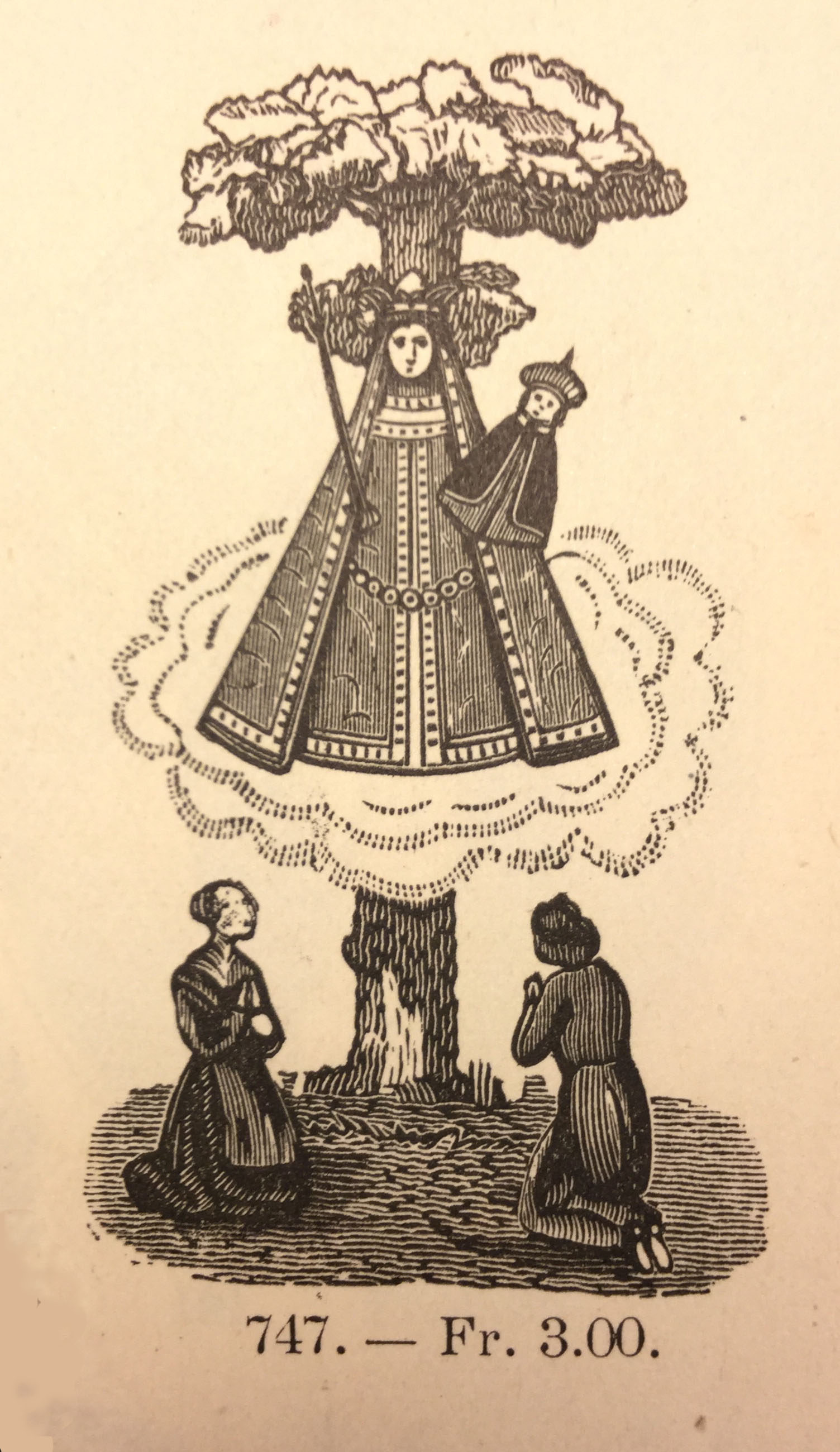
Seems like someone needs reading glasses


Our Updike Collection on the History of Printing contains a tremendous number of type specimen books, many of which have sections of cuts–small, reusable illustrations that printers could purchase to illustrate books, newspapers, broadsides, and the like. (We often describe them as “historic clip art”.)
More often than not, first-time viewers of these cuts will point to one and exclaim, “Wow, that would make a great tattoo!” Which brings us to two points:
We’d like to present a few recent inspirations, all from a recently cataloged specimen book from the G. Schildknecht type foundry in Brussels.
Religious tattoos are always popular, but does anyone really need to see another bicep graced by a sacred heart? Why not get a unique religious tattoo, like this image of St. Nicholas with three babies in a wooden tub?

(If you don’t know the story of St. Nicholas miraculously resurrecting three babies who were chopped up and salted by an evil butcher, well, now you do.)
If that’s too tame for you, you could also get this image of an apparition of Mary in a… tree? Is that a mushroom cloud? Why don’t Mary or baby Jesus have limbs? If you know more about what this image is depicting, please let us know.

If a religious tattoo isn’t for you, may we suggest an animal? Such as…
…totally stoked cat, disheveled porcupine, maned sloth with a weird face, or side-eye sheep?
For the truly fun-loving tattoo-getter, there’s always Dionysus, which is my preliminary identification of the fun-loving and wavy-eyedbrowed gent shown here:

And finally, for those looking for a unique twist on the traditional “Mom” tattoo, how about this stylized face situation, with “Mom” on the banner?

This is a long overdue post about a terrific gift we received in early January.
Big thanks to Akira Yoshino and Taro Yumiba (and others) who sent in a cache of great 20th-century Japanese type specimen books and ephemera. If you’re interested in taking a look, stop in during our open hours, or set up an appointment to visit.
For a while now I’ve been planning on making a repository to store interesting pages from type specimen books that I come across during the day. And, more importantly, I wanted a place for visitors who use the Updike Collection to share their own images (we welcome researchers taking pictures of the materials they’re using when they visit). That site is now up and running:  There are only a few images available at present, but expect many more in the future. And to celebrate, here’s the first post in an occasional series of ransom-note-style collages taken from images on the site:
There are only a few images available at present, but expect many more in the future. And to celebrate, here’s the first post in an occasional series of ransom-note-style collages taken from images on the site: 
Continuing our series on some of the recent new additions to our collections, here are a few type specimens that will join the Updike Collection, already impressively stocked with type specimen books from the sixteenth century to the twentieth:
These are five twentieth-century examples, including the Navy Hydrographic Office specimen book, which is in a plastic comb binding, complete with a small tool for opening the combs to add more pages as they became available:
Type specimen text is often enjoyable for it’s stream-of-conscious aesthetic. In many cases, like this Ludlow specimen, the text offers suggestions on how a face might be used. Headlines are indeed made for advertising a new product:
The table of contents for the Boyd Printing Company’s specimen book shows they covered all the bases: Linotype, Ludlow and hand setting: